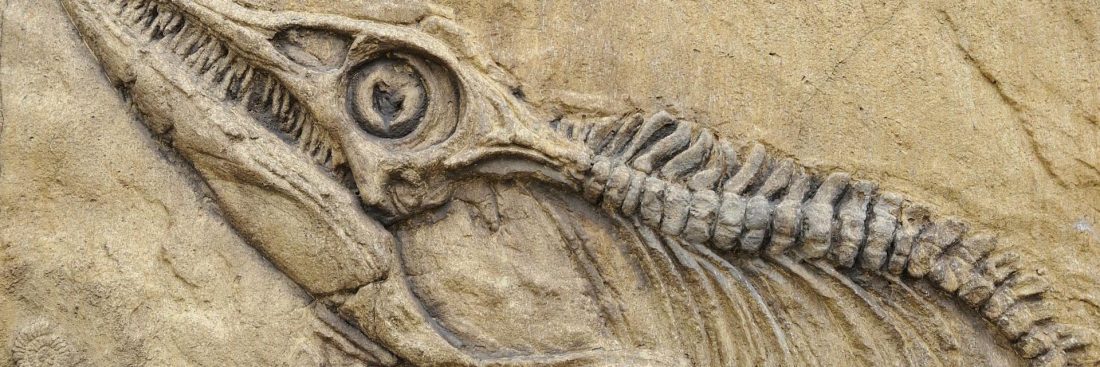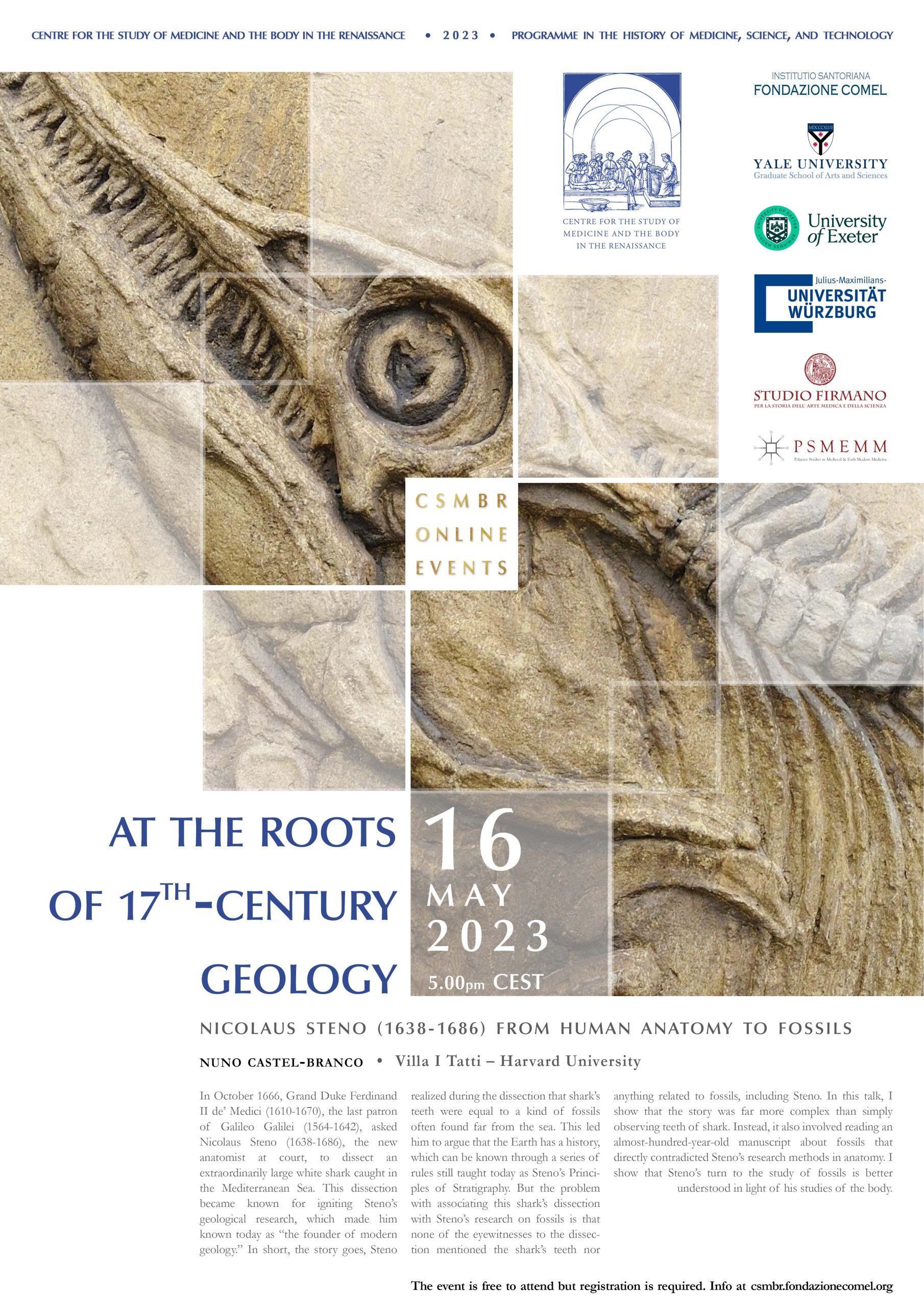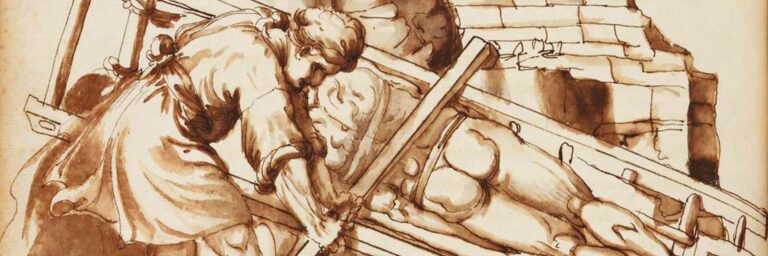At The Roots of 17th-Century Geology


At the Roots of
17th-Century Geology
Nicolaus Steno (1638-1686)
from Human Anatomy to Fossils
Nuno Castel-Branco
16 May 2023 – 5 PM (CEST)
About the Speaker ...
Nuno Castel-Branco is a historian of science at Villa I Tatti, the Harvard University Center for Italian Renaissance Studies.
Next fall, he will start a Research Fellowship at All Souls College, Oxford University. He has an M.Sc. in Physics from the University of Lisbon and completed a PhD in the History of Science at Johns Hopkins University in May 2021. He is writing a book on the intersection of mathematics, the life sciences, and theology in the work of the seventeenth-century anatomist Nicolaus Steno. His research has been sponsored by various institutions in Europe and the United States, such as the Fulbright Foundation and the Max Planck Institute for the History of Science. Nuno has written for academic and popular audiences in journals like Renaissance Quarterly, Wall Street Journal, and Scientific American.







